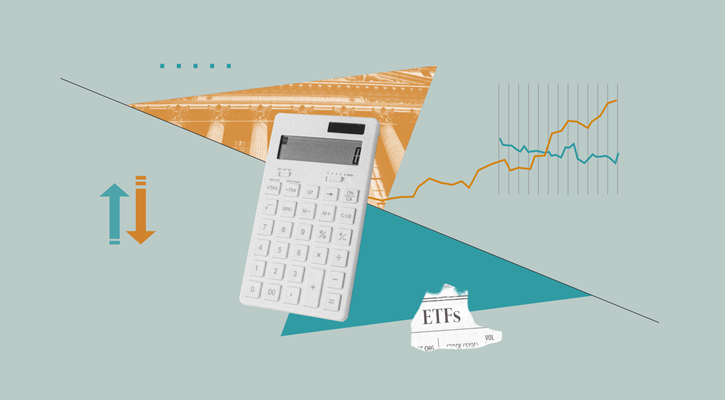
FAANGs; BRICs; PIGs. The financial world loves acronyms. The new kid on the block is GRANOLAS.
While there are no exchange-traded funds (ETFs) products expressly dedicated to GRANOLAS stocks (yet), but there are plenty of ways to gain exposure via passive funds.
Back in 2020, Goldman Sachs analysts wanted to highlight the fact financial markets in Europe are also driven by a small group of companies. It identified this group of 11 quality, growth-oriented and internationally-exposed companies as the GRANOLAS.
The acronym is clearly inspired by the US "Magnificent 7" and the "FAANG" stocks, which have been driving both Wall Street and retail portfolio gains in the last five years.
By comparison, the GRANOLAS group is a select group of European heavyweights: GSK (GSK), Roche (ROG), ASML (ASML), Nestlé (NESN), Novartis (NOVN), Novo Nordisk (NOVO B), L'Oréal (OR), LVMH (MC), AstraZeneca (AZN), SAP (SAP) and Sanofi (SANOFI).
With a combined market capitalisation of around €2.7 trillion (£2.3 trillion), these 11 names were responsible for more than half of the European stock market's gains over the past year.
ETFs With GRANOLA Exposure
• iShares STOXX Europe 50 UCITS ETF EUR Dist (EUN)
• Deka STOXX Europe 50® UCITS ETF (EL4Y)
• Deka EURO STOXX 50® ESG Filtered UCITS ETF (ELFA)
• Amundi MSCI Europe Climate Action UCITS ETF Dist (AE5B)
• Franklin STOXX Europe 600 Paris Aligned Climate UCITS ETF (EUPA)
• SPDR's STOXX Europe 600 SRI UCITS ETF EUR Acc (600X)
• SPDR MSCI Europe Health Care UCITS ETF (STWX)
• iShares S&P 500 Health Care Sector UCITS ETF USD (QDVG)
• iShares MSCI Europe Information Technology Sector UCITS ETF (ESIT)
(See more detailed commentary below)
Why is The GRANOLAS Outlook Positive?
In a note released last week, Goldman Sachs analysts argued these companies exhibit characteristics that are expected to thrive in the current cycle, such as solid earnings growth, high and stable margins, and strong balance sheets.
According to Sharon Bell of Goldman Sachs Research, European equities as a whole could rise by 7.5% in 2024, supported by an improving economic environment, reasonable valuations and the prospect of nearly flat long-term bond yields.
"While the European economy has its problems, the biggest European companies are pursuing growth all over the world," she says. "And that makes them quite attractive."
Moreover, the bank believes they can also benefit from the "structural shift towards passive investments and the lack of liquidity in the European stock market."
Six ETFs to Invest in The GRANOLAS
To date, there are no products expressly dedicated to GRANOLAS.
We therefore had to do an analysis of the portfolios of equity ETFs domiciled in Europe to identify those most exposed to the 11 stocks. Here are the best examples.
The main stock indices dedicated to European large-cap stocks all contain them, although in different proportions. The STOXX Europe 50, for instance, has 42-43% of its portfolio exposed to GRANOLAS.
ETFs tracking this include, for example, the iShares STOXX Europe 50 UCITS ETF EUR Dist (EUN), or the Deka STOXX Europe 50® UCITS ETF (EL4Y). These funds devote about 7.1% of their assets to Novo Nordisk, 5.1% to Nestlé and 4.2% to LVMH, down to 1.5% to GSK.
The Euro STOXX 50 index, on the other hand, stops at 27-28% exposure to the Goldman Sachs-coined equity group, while it rises to 36% in its ESG version, replicated by the Deka EURO STOXX 50® ESG Filtered UCITS ETF (ELFA). This fund dedicates 12.2% of the portfolio to ASML, 8.4% to LVMH and 6.7% to SAP.
With its 425 stocks, MSCI's Europe index is considerably more diversified than the previous benchmark, but also offers exposure to all 11 GRANOLAS stocks. In this case, however, their weighting is around 22% of the total assets.
This share rises, however, to 33% in the case of the Amundi MSCI Europe Climate Action UCITS ETF Dist (AE5B), which is designed to identify European companies rated as leaders in their sector in terms of their positioning for climate transition. Again, the leading stock position is Novo Nordisk with 5.5% of the portfolio, followed by ASML at 5.2%.
The same applies to the STOXX Europe 600, which, due to the breadth of its portfolio, is not able to offer significant exposure to the GRANOLAS, stopping at 20 per cent of assets.
This is not the case for the Franklin STOXX Europe 600 Paris Aligned Climate UCITS ETF (EUPA), however. It dedicates 35% of its assets to the 11 GRANOLAS stocks, with ASML standing out as the main component (5.5%).
A similar case occurs with SPDR's STOXX Europe 600 SRI UCITS ETF EUR Acc (600X), whose portfolio devotes almost 35% of its exposure to eight of the 11 GRANOLAS stocks. Exposure is more evenly distributed here, ranging from 3.5% of Novo Nordisk to 1% of Sanofi.
Then there are the sector ETFs. Within the GRANOLAS group, six out of 11 companies are part of the pharmaceutical industry: Novo Nordisk, Novartis, AstraZeneca, Roche, Sanofi and GSK are also the top six positions in funds such as the SPDR MSCI Europe Health Care UCITS ETF (STWX) or the iShares S&P 500 Health Care Sector UCITS ETF USD (QDVG). These strategies are by nature very concentrated, with these six names weighing in at around 70% of the total exposure.
The case of technology strategies is different, and includes the iShares MSCI Europe Information Technology Sector UCITS ETF (ESIT), where a 50% exposure to the GRANOLAS group is only achieved by a large weighting in ASML (32%) and SAP (18%). This makes it insignificant, therefore.




























